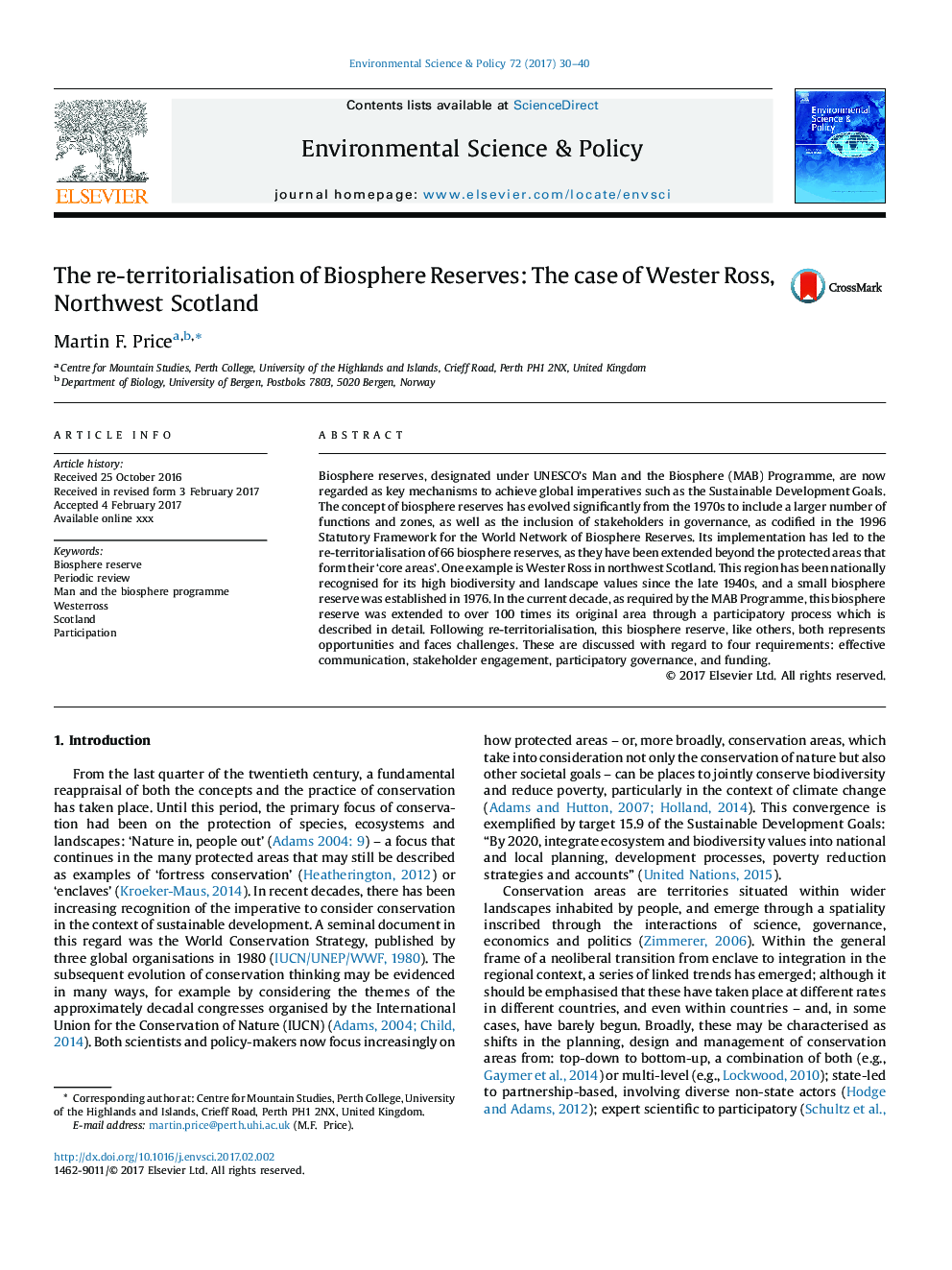| Article ID | Journal | Published Year | Pages | File Type |
|---|---|---|---|---|
| 5115700 | Environmental Science & Policy | 2017 | 11 Pages |
Abstract
Biosphere reserves, designated under UNESCO's Man and the Biosphere (MAB) Programme, are now regarded as key mechanisms to achieve global imperatives such as the Sustainable Development Goals. The concept of biosphere reserves has evolved significantly from the 1970s to include a larger number of functions and zones, as well as the inclusion of stakeholders in governance, as codified in the 1996 Statutory Framework for the World Network of Biosphere Reserves. Its implementation has led to the re-territorialisation of 66 biosphere reserves, as they have been extended beyond the protected areas that form their 'core areas'. One example is Wester Ross in northwest Scotland. This region has been nationally recognised for its high biodiversity and landscape values since the late 1940s, and a small biosphere reserve was established in 1976. In the current decade, as required by the MAB Programme, this biosphere reserve was extended to over 100 times its original area through a participatory process which is described in detail. Following re-territorialisation, this biosphere reserve, like others, both represents opportunities and faces challenges. These are discussed with regard to four requirements: effective communication, stakeholder engagement, participatory governance, and funding.
Related Topics
Physical Sciences and Engineering
Energy
Renewable Energy, Sustainability and the Environment
Authors
Martin F. Price,
